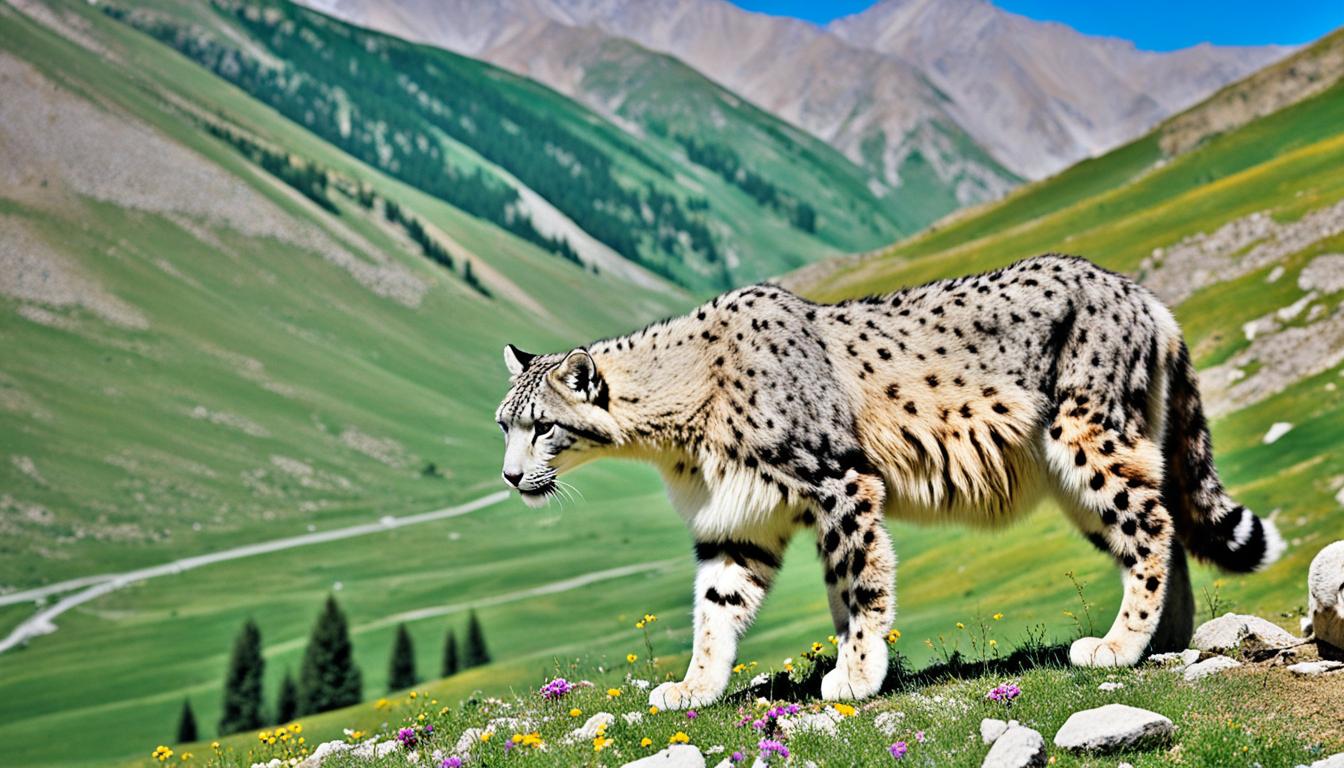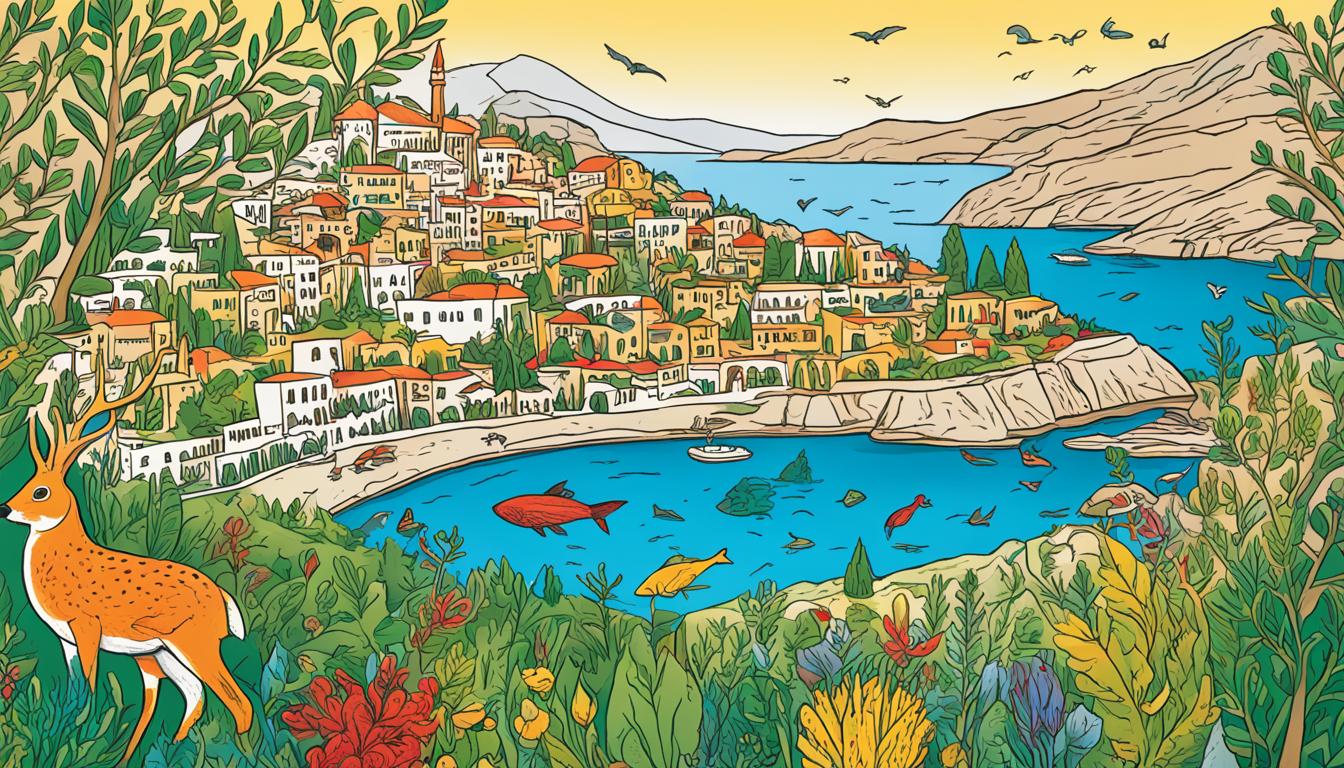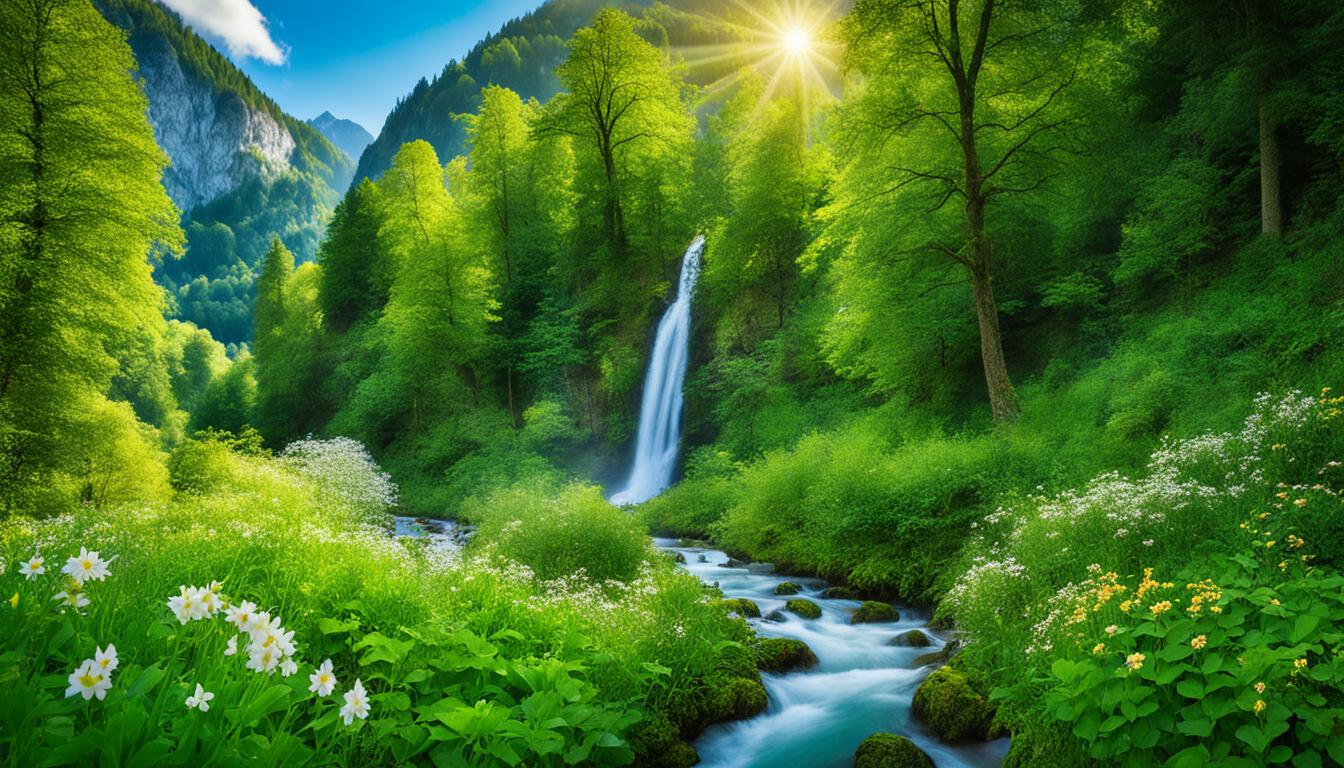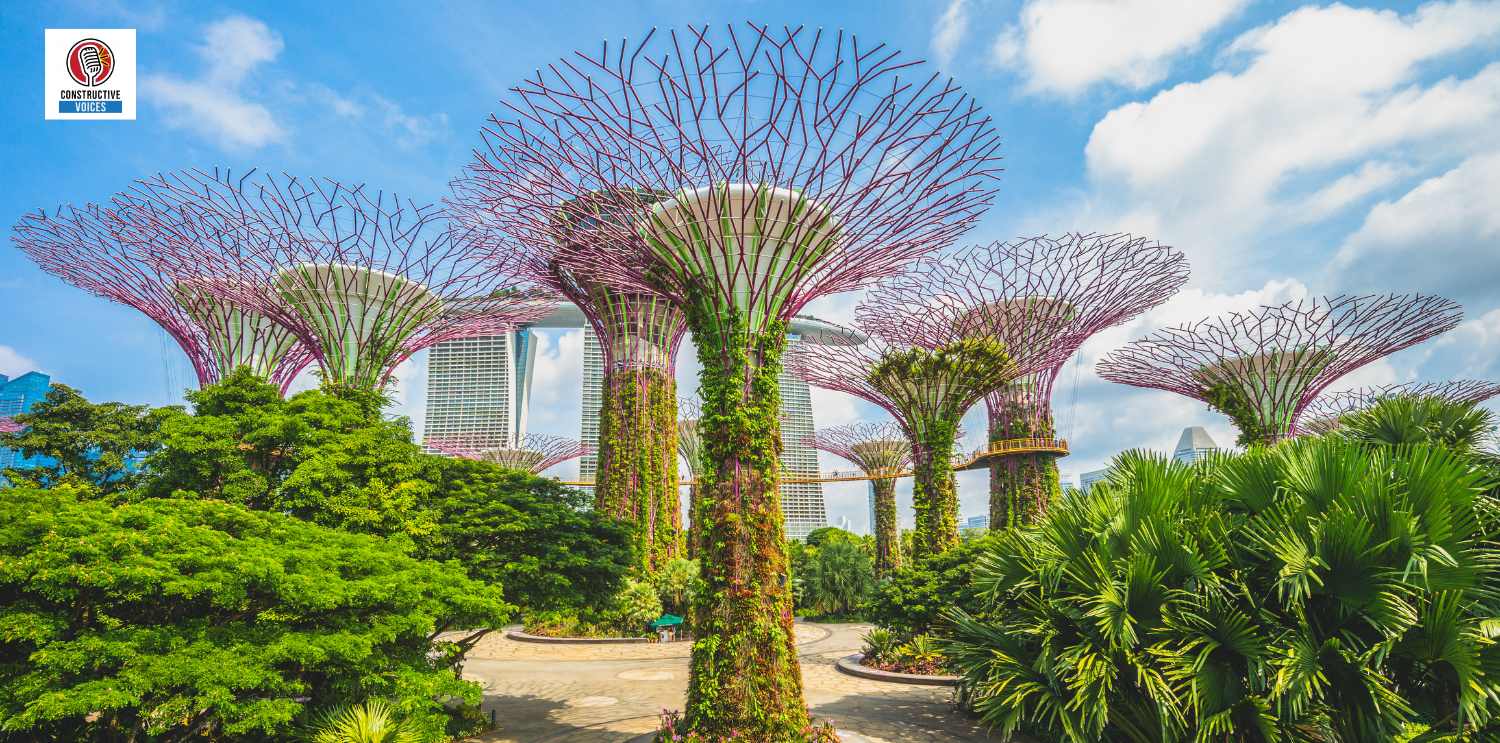Latvia Biodiversity: Animal and Plant Species and What Is Under Threat
Latvia is blessed with a remarkable diversity of animal and plant species, thanks to its unique geographical location and diverse ecosystems. The country’s lush landscapes are home to a wide variety of wildlife habitats, supporting a rich species diversity that contributes to the overall environmental protection and ecological balance. However, this biodiversity is under threat due to various factors such as pollution, habitat degradation, and the impacts of climate change.
The Baltic Sea and the waters of the Gulf of Riga provide unique brackish water communities and ecosystems that further enrich Latvia’s biodiversity. In addition to these coastal areas, the country boasts a significant number of rivers, lakes, forests, and other natural resources. All of these habitats form an intricate web of ecosystems that provide shelter, food, and breeding grounds for countless species.
Despite the importance of Latvia’s biodiversity, the ecosystems and species face significant challenges. Pollution from human activities and industries, habitat degradation caused by deforestation and land-use change, and the increasing impacts of climate change pose serious threats to the delicate balance of these natural wonders.
Key Takeaways:
- Latvia’s biodiversity is rich and diverse, with a wide variety of animal and plant species.
- Wildlife habitats in Latvia play a crucial role in maintaining ecological balance and environmental protection.
- Human activities, such as pollution and habitat degradation, pose significant threats to Latvia’s biodiversity.
- Conservation efforts are important for preserving the country’s unique ecosystems and species diversity.
- The impacts of climate change further exacerbate the challenges faced by Latvia’s biodiversity.
Now let’s dive deeper into the specific ecosystems and habitats that contribute to Latvia’s biodiversity and explore the efforts being made to protect and conserve this precious natural heritage.
The Unique Ecosystems of Latvia’s Coastline
The Latvian coastline stretches for approximately 500 km and is characterized by unique ecosystems, including beaches, dunes, and coastal waters. These ecosystems are home to a variety of species that are adapted to the unique conditions of the coastal environment.
| Coastal Ecosystems | Key Features |
|---|---|
| Beaches | Wide sandy stretches interspersed with rocky areas |
| Dunes | Sand dunes of various sizes and shapes |
| Coastal Waters | Brackish water providing a unique aquatic habitat |
The coastal waters provide rich fish resources, supporting a thriving fishing industry in Latvia. These waters are home to various species of fish, including herring, cod, and flounder. The Irbe Strait of the Gulf of Riga is an important wintering site for water birds, providing sanctuary to a diverse range of species.
“The Latvian coastline is a treasure trove of unique ecosystems that are vital for the country’s biodiversity and natural heritage.” – Dr. Anna Petrova, Marine Biologist
Unfortunately, these coastal ecosystems are under threat. Habitat degradation and pollution from human activities, such as coastal development and industrial runoff, pose significant challenges to the delicate balance of these ecosystems. Additionally, the expansion of invasive species further disrupts the natural harmony of the coastal environment.
Efforts are underway to protect and restore Latvia’s coastal ecosystems. Conservation organizations, government agencies, and local communities are working together to implement sustainable practices and raise awareness about the importance of preserving these unique habitats.
The Abundance of Rivers and Lakes in Latvia
Latvia boasts an incredible abundance of rivers and lakes, making it a true paradise for nature enthusiasts and wildlife alike. With over 12,400 rivers and 2,256 lakes, covering approximately 3.7% of its territory, the country is teeming with freshwater ecosystems that contribute to its remarkable biodiversity.
These water bodies are essential for maintaining Latvia’s biological diversity, serving as vital habitats for a wide range of species. One notable group of inhabitants are the beautiful water birds that make these rivers and lakes their home, adding a touch of elegance and splendor to the already picturesque landscape.
Water birds play a crucial role in the delicate balance of Latvia’s ecosystems, contributing to the overall health and stability of the environment. From graceful swans and majestic herons to charming ducks and elusive grebes, these avian residents bring life and character to the waters of Latvia.
However, human activities have taken their toll on some of these rivers and lakes, posing a threat to their natural ecosystems and the species that depend on them. Factors such as excessive regulation and pollution have disrupted the delicate balance, resulting in habitat degradation and dwindling biological diversity.
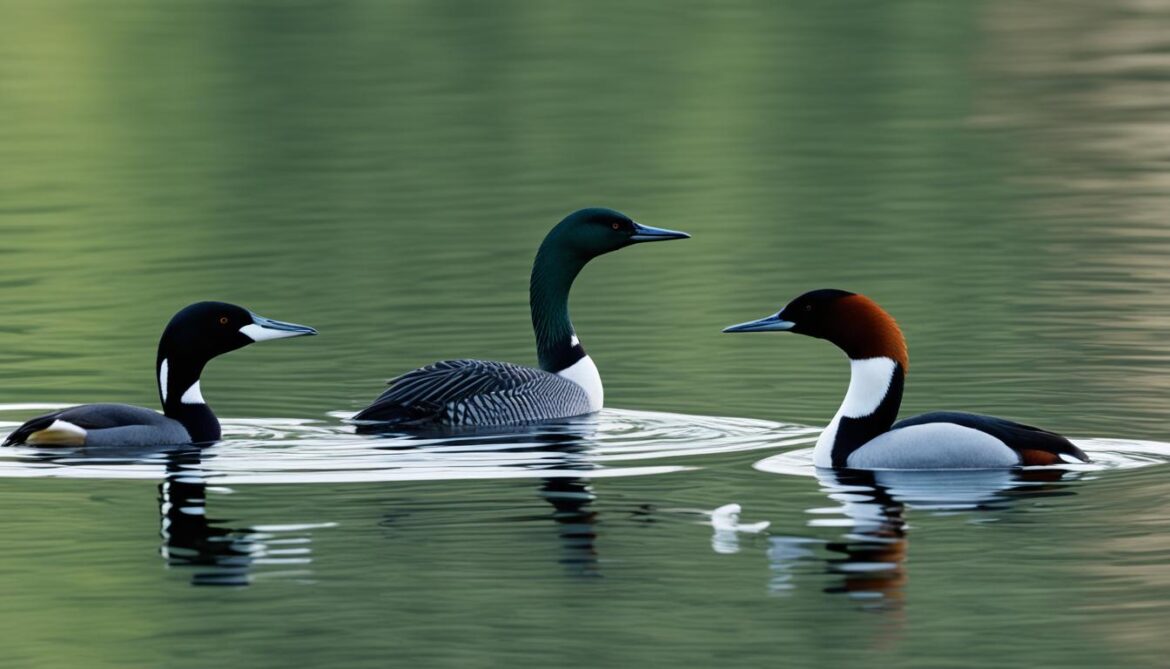
To protect and preserve the abundance of Latvia’s rivers and lakes, it is crucial that we prioritize sustainable practices and environmental stewardship. This includes promoting responsible water management, reducing pollution, and raising awareness about the importance of preserving these valuable freshwater ecosystems for future generations.
Preserving Latvia’s Waterbird Sanctuaries
- Establishing protected areas and sanctuaries specifically for water birds, ensuring their safety and uninterrupted nesting and breeding grounds.
- Implementing conservation programs to monitor and protect endangered water bird species.
- Collaborating with local communities, organizations, and international bodies to promote sustainable practices and raise awareness about the importance of preserving Latvia’s rivers and lakes.
By taking these actions, we can safeguard the abundance of Latvia’s rivers and lakes, protecting not only the water birds but also the entire ecosystem that relies on their presence. Together, we can ensure the long-term viability and beauty of these precious natural resources, preserving Latvia’s rich biological diversity for generations to come.
The Richness of Latvia’s Forests
Forests are a fundamental feature of Latvia’s biodiversity, covering an impressive 44.6% of the country’s land area. They play a vital role in providing habitats for a diverse range of plant and animal species, fostering a thriving ecosystem. Moreover, Latvia’s forests are essential contributors to carbon sequestration, actively reducing greenhouse gas emissions to combat climate change.
The abundance of forests in Latvia also serves important functions in regulating water flow, preventing soil erosion, and maintaining the ecological balance of the region. The interconnectedness of these ecosystems acts as a natural safeguard against environmental disturbances, promoting stability and resilience.
However, the rich biodiversity and ecological services provided by Latvia’s forests face significant threats. Unsustainable practices such as intensive forest management and the conversion of forests for agricultural purposes have led to the loss of biodiversity and degradation of habitats. These practices disrupt the delicate equilibrium of the ecosystem, jeopardizing the survival of numerous species that rely on the forest as their home.
Efforts are being made to address these challenges and preserve the integrity of Latvia’s forests. Sustainable forest management practices, guided by scientific research and environmental considerations, are being implemented to ensure the long-term viability of these ecosystems. Measures such as reforestation, protection of old-growth forests, and the establishment of protected areas contribute to the conservation of Latvia’s forests and the restoration of their biodiversity.
To raise awareness about the importance of forest conservation, educational campaigns and community engagement initiatives are being undertaken. By fostering a sense of stewardship and responsibility towards the forests, these efforts aim to inspire individuals and communities to actively participate in the protection and sustainable use of this invaluable natural resource.
It is crucial that the challenges facing Latvia’s forests are addressed with urgency and commitment. By safeguarding the biodiversity and ecological services provided by these forests, Latvia can ensure a sustainable and resilient future for its natural environment and the countless species that call it home.
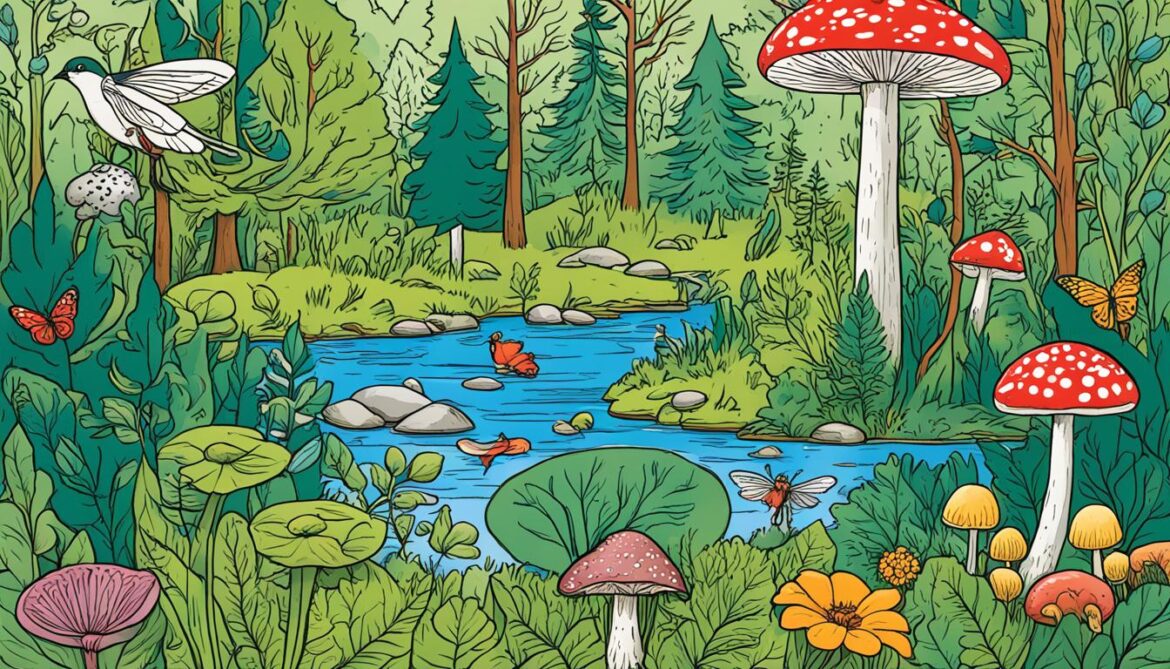
The Remarkable Wildlife of Latvia
Latvia is blessed with a diverse range of animal species that call its picturesque landscapes home. With over 18,000 recorded species, the country’s biodiversity is truly remarkable. Among these species, approximately 907 are considered rare and threatened, making their conservation of utmost importance for the preservation of Latvia’s rich biodiversity and ecological balance.
The wildlife found in Latvia spans across various taxonomic groups, including mammals, birds, amphibians, reptiles, and fish. These animals play critical roles in maintaining the delicate balance of ecosystems and contribute to the overall health and vitality of Latvia’s natural environment.
The Mammals of Latvia
Latvia’s forests and meadows are home to a diverse range of mammal species. From the majestic European brown bear to the elusive lynx and the agile red squirrel, these animals occupy different niches and bring vibrancy to the country’s fauna. Other notable mammal species in Latvia include the Eurasian otter, European roe deer, and wild boar.
The Avian Wonders
Latvia’s skies are filled with the melodious songs of numerous bird species. From the iconic white stork nesting atop chimneys to the elegant mute swan gracefully gliding across lakes, these avian wonders add a touch of ethereal beauty to Latvia’s landscapes. Other bird species of interest include the black stork, Eurasian eagle-owl, and the common kingfisher.
The Fascinating Reptiles and Amphibians
Latvia is also home to various reptile and amphibian species. The common frog, European adder, and the agile sand lizard are just a few examples of the fascinating creatures that inhabit Latvia’s wetlands, forests, and meadows. These reptiles and amphibians play essential roles in maintaining ecosystem balance and contribute to the overall biodiversity of the country.
The Underwater Treasures
The rivers, lakes, and coastal waters of Latvia are teeming with a rich diversity of fish species. From the revered Atlantic salmon that journeys upstream to spawn, to the agile pike lurking in the shallow waters, Latvia’s aquatic ecosystems showcase an underwater world of wonder. Other notable fish species include the European eel, grayling, and the European perch.
| Animal Group | Number of Species |
|---|---|
| Mammals | 300+ |
| Birds | 382 |
| Reptiles | 7 |
| Amphibians | 10 |
| Fish | 114 |
It is vital to protect and conserve Latvia’s remarkable wildlife to ensure the continued existence of these unique species. Efforts are underway to safeguard their habitats, enact protective legislations, and raise awareness among local communities. By valuing and preserving the diverse animal life of Latvia, we can contribute to the conservation of the country’s precious biodiversity for generations to come.
The Importance of Conserving Grasslands and Wetlands
Grasslands and wetlands play a crucial role in supporting Latvia’s rich biodiversity. These diverse ecosystems provide habitats for a wide range of plant and animal species, contributing to the overall health and balance of Latvia’s natural environment.
However, these valuable habitats are currently facing significant threats, including habitat loss, overgrowing, melioration, and the expansion of agricultural land. The decline of grasslands and wetlands has resulted in a loss of biodiversity, affecting the survival of many species that rely on these habitats for their existence.
Grasslands, characterized by their vast stretches of open land and diverse vegetation, are home to numerous plant and animal species. They provide important feeding and breeding grounds for birds, insects, and small mammals. Additionally, grasslands contribute to carbon sequestration, soil conservation, and water regulation, making them vital for maintaining the ecological balance.
Wetlands, including marshes, swamps, and bogs, are unique ecosystems that are characterized by their high moisture levels. They support a wide variety of flora and fauna, including rare and endangered species. Wetlands act as natural filters, purifying water and improving water quality. They also provide essential habitats for migratory bird species and serve as crucial breeding grounds for amphibians and fish.
Conserving grasslands and wetlands is not only essential for protecting Latvia’s biodiversity, but it also contributes to the overall health and resilience of the country’s ecosystems. Efforts to preserve and restore these habitats are crucial in mitigating the effects of habitat loss and reducing the decline in species populations.
“Grasslands and wetlands are intricate ecosystems that support a remarkable array of species. By conserving these habitats, we are not only protecting Latvia’s natural heritage but also ensuring the continued provision of important ecological services.” – Dr. Anna Peterson, Wildlife Conservationist
The Impact of Habitat Loss
The loss of grasslands and wetlands in Latvia has resulted in a decline in biodiversity. As these habitats are destroyed or degraded, plant and animal species lose their natural homes and sources of food. This disruption to their ecological niches can lead to the decline and even extinction of species.
The conversion of grasslands and wetlands into agricultural land and urban areas has been a major driver of habitat loss. The expansion of farming practices and land development has significantly reduced the available space for these important ecosystems. Additionally, the draining and filling of wetlands for construction and agriculture further exacerbate the decline of these habitats.
Habitat loss also affects the overall functioning of ecosystems. Grasslands and wetlands play a crucial role in nutrient cycling, water purification, and flood control. Their decline can lead to increased water pollution, reduced water storage capacity, and increased vulnerability to natural disasters such as flooding.
Without effective conservation measures, the decline of grasslands and wetlands will continue to negatively impact Latvia’s biodiversity and ecological balance.
The Need for Conservation Efforts
Protecting and conserving grasslands and wetlands is not only a matter of preserving species and ecosystems but also essential for human well-being. These habitats provide numerous ecosystem services that benefit local communities, including water filtration, climate regulation, carbon sequestration, and recreational opportunities.
Conservation efforts should focus on preserving the remaining intact grasslands and wetlands, as well as restoring degraded areas. This involves implementing land-use practices that minimize the impact on these habitats, promoting sustainable agricultural practices, and encouraging the protection of key areas for grassland and wetland conservation.
Collaboration between government bodies, non-governmental organizations, scientists, and local communities is crucial for the successful conservation of these precious ecosystems. Together, we can work towards safeguarding the biodiversity and natural heritage of Latvia for future generations.
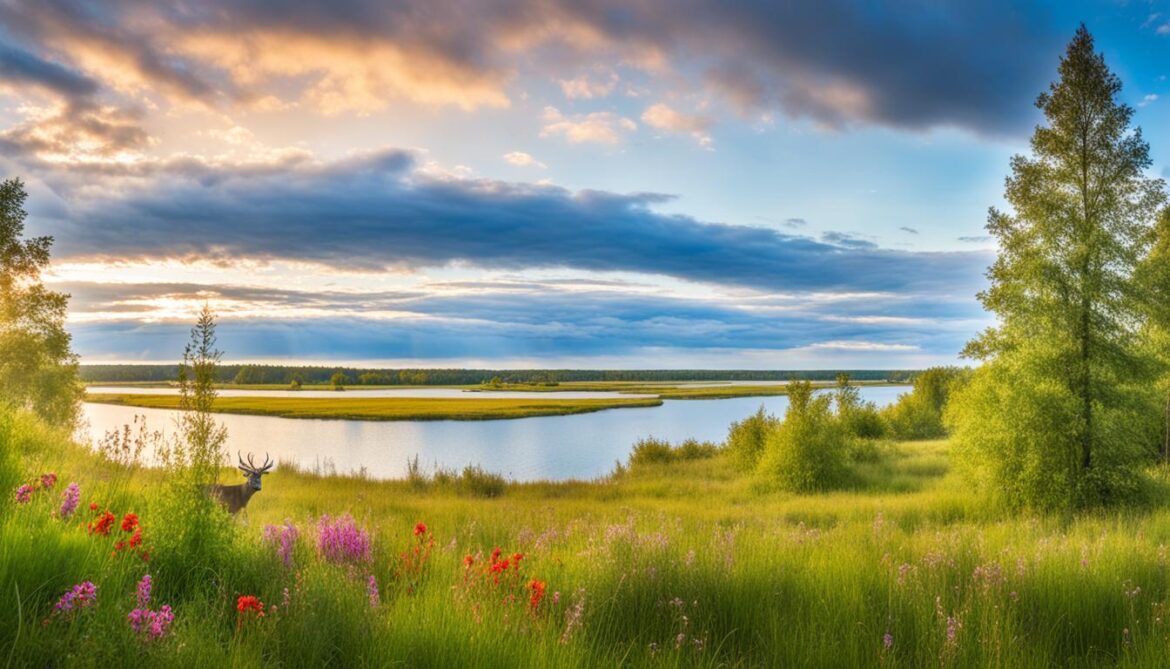
Conserving grasslands and wetlands is vital for preserving Latvia’s rich biodiversity and maintaining the ecological balance of its ecosystems. By protecting these habitats, we can ensure the survival of unique plant and animal species, as well as the provision of essential ecosystem services.
The Threats to Latvia’s Biodiversity
Latvia’s biodiversity is under threat from various factors that have a detrimental impact on its ecosystems, species populations, and overall biodiversity. These threats include habitat loss and fragmentation, pollution, land-use change, and the expansion of invasive species.
Land-use change poses a significant threat to Latvia’s biodiversity. The conversion of natural habitats for agriculture, urban development, and infrastructure projects results in the loss and fragmentation of vital ecosystems. As a result, many plant and animal species lose their habitats and struggle to survive.
Pollution, both from industrial and agricultural activities, also poses a grave threat to Latvia’s biodiversity. Water pollution affects the health of aquatic ecosystems, leading to the decline of fish populations and other aquatic species. Additionally, air pollution can have harmful effects on plant growth and contribute to the degradation of forest ecosystems.
The spread of invasive species is another major threat to Latvia’s biodiversity. These non-native species disrupt native ecosystems by outcompeting native species for resources and altering the balance of the ecosystem. Invasive species can also cause harm to agricultural crops and impact the livelihoods of local communities.
The following table provides a summary of the threats to Latvia’s biodiversity:
| Threat | Description |
|---|---|
| Land-use change | The conversion of natural habitats for agriculture, urban development, and infrastructure projects. |
| Pollution | Industrial and agricultural activities leading to water and air pollution. |
| Invasive species | The introduction of non-native species that disrupt native ecosystems. |
To mitigate these threats and ensure the long-term survival of Latvia’s diverse flora and fauna, conservation efforts are crucial. This includes the protection and restoration of habitats, the implementation of sustainable land-use practices, and the control of invasive species.
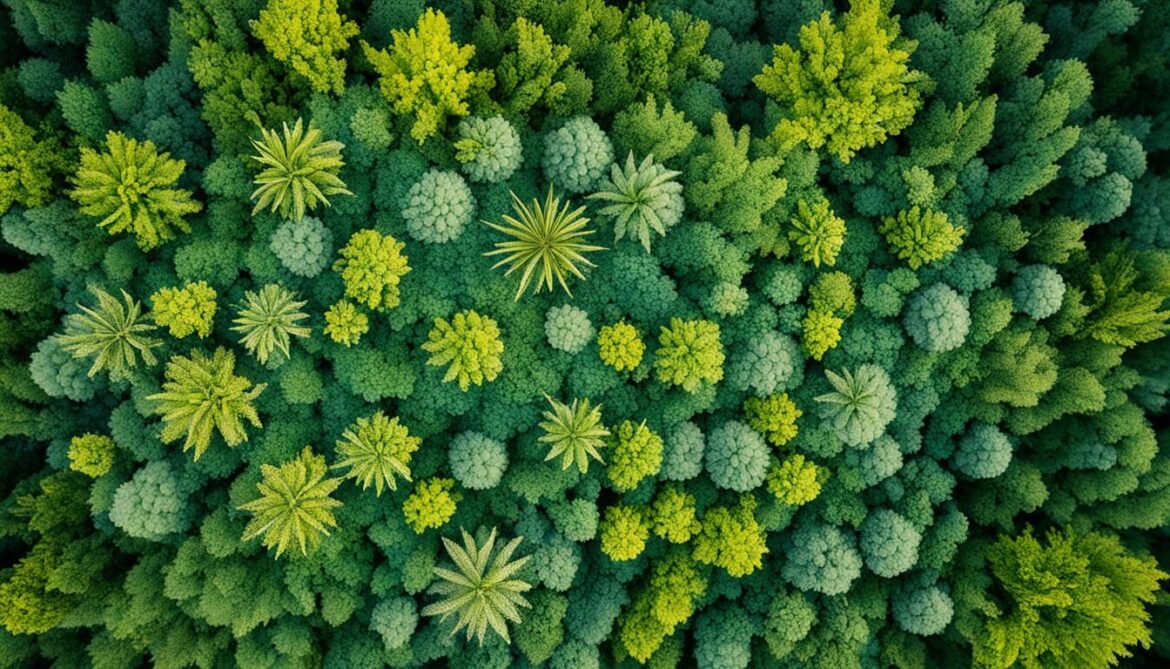
Conservation Efforts in Latvia
In order to enhance the conservation of Latvia’s rich biodiversity, the country has implemented a range of measures. One of the key initiatives is the establishment of protected areas, which include national parks and nature reserves. These protected areas cover approximately 11.9% of Latvia’s territory, providing essential habitats for diverse plant and animal species.
“Protected areas play a crucial role in safeguarding Latvia’s unique ecosystems and preserving its biodiversity. They serve as havens for wildlife and plants, allowing them to thrive undisturbed and ensuring the long-term viability of their populations.” – Dr. Anna Ziemele, Environmental Scientist
Furthermore, to guide and coordinate conservation efforts, Latvia has developed a comprehensive National Biodiversity Strategy and Action Plan. This strategy outlines a roadmap for biodiversity conservation, emphasizing the sustainable use of the country’s natural resources. It focuses on promoting nature conservation, protecting endangered species, and restoring degraded ecosystems.
This holistic approach to conservation aligns with international guidelines and best practices, highlighting Latvia’s commitment to preserving its valuable natural heritage. By actively implementing these strategies, Latvia is working towards maintaining a harmonious balance between human activities and the protection of its diverse ecosystems.
Protected Areas in Latvia
Latvia’s protected areas are central to its conservation efforts, serving as important refuges for flora and fauna. Here are some notable protected areas:
- Gauja National Park: Located in the northeastern part of Latvia, this national park covers an area of approximately 917 square kilometers. It is renowned for its scenic landscapes, ancient forests, and the meandering Gauja River.
- Razna National Park: Situated in the eastern part of the country, Razna National Park spans around 58 square kilometers. It encompasses the picturesque Lake Razna and surrounding wetlands, providing a haven for numerous bird species.
- Venta River Venta Rapid Nature Reserve: This nature reserve, located in the western part of Latvia, is famous for the Venta Rapid waterfall, which attracts visitors with its awe-inspiring beauty. The reserve protects the unique flora and fauna found in the river’s riparian zone.

Latvia’s efforts in nature conservation and the establishment of protected areas showcase the country’s commitment to preserving its biodiversity for future generations. By maintaining a delicate balance between sustainable development and environmental protection, Latvia is paving the way for a more sustainable and ecologically resilient future.
Implementation of Environmental Policies
Latvia is committed to protecting its unique biodiversity and promoting sustainable development through the implementation of comprehensive environmental policies and strategies. These initiatives aim to ensure the responsible and balanced use of natural resources while safeguarding the country’s diverse ecosystems and species.
One of the key policies driving Latvia’s environmental efforts is the Environmental Policy Concept. This strategic framework sets out the country’s goals and objectives for preserving biodiversity, improving environmental quality, and promoting sustainable practices across different sectors. By aligning environmental protection with socio-economic development, Latvia strives to achieve a harmonious balance between human activities and nature.
The Latvian Sustainable Development Strategy is another crucial component of the country’s environmental policies. This long-term strategy integrates environmental, social, and economic considerations to foster sustainable development practices. It emphasizes the importance of biodiversity conservation and protection as essential elements of Latvia’s sustainable growth.
In addition to national initiatives, Latvia actively participates in international agreements and conventions to further enhance its biodiversity conservation efforts. The country is a party to the Convention on Biological Diversity, a global commitment to conserving and sustainably using the world’s biological diversity. Through its engagement in this convention, Latvia collaborates with other nations and contributes to international efforts to protect biodiversity and promote sustainable development.
By implementing these environmental policies and engaging in international partnerships, Latvia demonstrates its dedication to preserving its unique natural heritage for future generations. These concerted efforts aim to ensure the sustainable development of Latvia while safeguarding the country’s biological diversity and the well-being of its ecosystems.
Funding and Support for Biodiversity Conservation
Efforts to conserve Latvia’s biodiversity are supported by various mechanisms established by the country. These mechanisms encompass legislation, funding from the European Union, capacity-building initiatives, and coordination among government agencies and non-governmental organizations. Latvia recognizes the importance of integrating biodiversity objectives into sectoral policies, such as agriculture and forestry, to ensure effective conservation measures.
“Integrating biodiversity objectives into sectoral policies is crucial to safeguard Latvia’s diverse ecosystems and species. By coordinating efforts and providing necessary funding, the country aims to strengthen its capacity in biodiversity conservation.”
Latvia has implemented legislation to protect its valuable biodiversity and provide a legal framework for conservation efforts. The European Union provides financial support through various funding programs and initiatives. This funding aids in the implementation of conservation projects, the establishment and management of protected areas, and the development of sustainable practices.
In addition to financial support, capacity-building initiatives play a vital role in enhancing Latvia’s conservation efforts. These initiatives focus on equipping individuals and organizations with the necessary knowledge and skills to effectively implement biodiversity conservation measures. Through training programs, workshops, and educational campaigns, Latvia aims to strengthen the capacity of its conservation workforce and raise awareness about the importance of preserving biodiversity.
Coordination is key to successful biodiversity conservation. Latvia promotes collaboration and coordination among government agencies, non-governmental organizations, and stakeholders involved in conservation efforts. By fostering partnerships and sharing knowledge, the country aims to streamline conservation activities, avoid duplication of efforts, and maximize the impact of conservation initiatives.
Support Mechanisms for Biodiversity Conservation in Latvia:
| Support Mechanism | Description |
|---|---|
| Legislation | Establishment of laws and regulations to protect biodiversity and provide a legal framework for conservation efforts. |
| European Union Funding | Financial support from the European Union to fund conservation projects, establish and manage protected areas, and promote sustainable practices. |
| Capacity-Building Initiatives | Training programs, workshops, and educational campaigns to enhance the knowledge and skills of individuals and organizations involved in biodiversity conservation. |
| Coordination | Promotion of collaboration and coordination among government agencies, non-governmental organizations, and stakeholders to streamline conservation activities and maximize impact. |

Through these support mechanisms, Latvia is committed to the preservation of its diverse flora and fauna. By securing funding, building capacity, and fostering coordination, the country aims to ensure the long-term sustainability of its invaluable biodiversity.
Challenges and Future Perspectives
Despite ongoing conservation efforts, Latvia faces several challenges in preserving its rich biodiversity. To ensure the sustainable development of its ecosystems, the country must address these challenges and look towards future perspectives.
The Need for Better Management Plans in Protected Areas
One significant challenge is the need for improved management plans in protected areas. While Latvia has established various protected areas, proper management is crucial to effectively protect and conserve the diverse wildlife and habitats within them. Implementing comprehensive management plans will help mitigate threats and enhance the resilience of these areas.
Increased Awareness Among the General Public and Policymakers
Another challenge is the need for increased awareness among the general public and policymakers about the importance of biodiversity conservation. By raising awareness about Latvia’s unique ecosystems and the benefits they provide, individuals and decision-makers can better understand the significance of sustainable development and take proactive measures to protect biodiversity.
Integration of Biodiversity Objectives into Sectoral Policies
Integrating biodiversity objectives into sectoral policies is essential for achieving sustainable development in Latvia. By incorporating biodiversity considerations into sectors such as agriculture, forestry, and urban planning, the country can ensure that economic activities support and enhance biodiversity rather than causing harm. This integration will contribute to the long-term conservation and sustainable use of Latvia’s natural resources.
Opportunities for Future Progress
Although there are challenges, Latvia also has opportunities for future progress in biodiversity conservation:
- Completion of Ecosystems Mapping: Increasing efforts to map and understand Latvia’s ecosystems will provide valuable insights into their distribution, functioning, and vulnerability. This information can guide targeted conservation efforts and support evidence-based decision-making.
- Development of a National Biodiversity Strategy: Creating a comprehensive national biodiversity strategy will enhance Latvia’s conservation efforts by providing a framework for prioritizing actions, setting targets, and promoting coordination among stakeholders.
- Increased Resource Mobilization: Strengthening financial resources for biodiversity conservation will enable the implementation of essential conservation measures, such as habitat restoration, species protection, and public awareness campaigns. Enhanced resource mobilization will support the sustainable development of Latvia’s biodiversity.
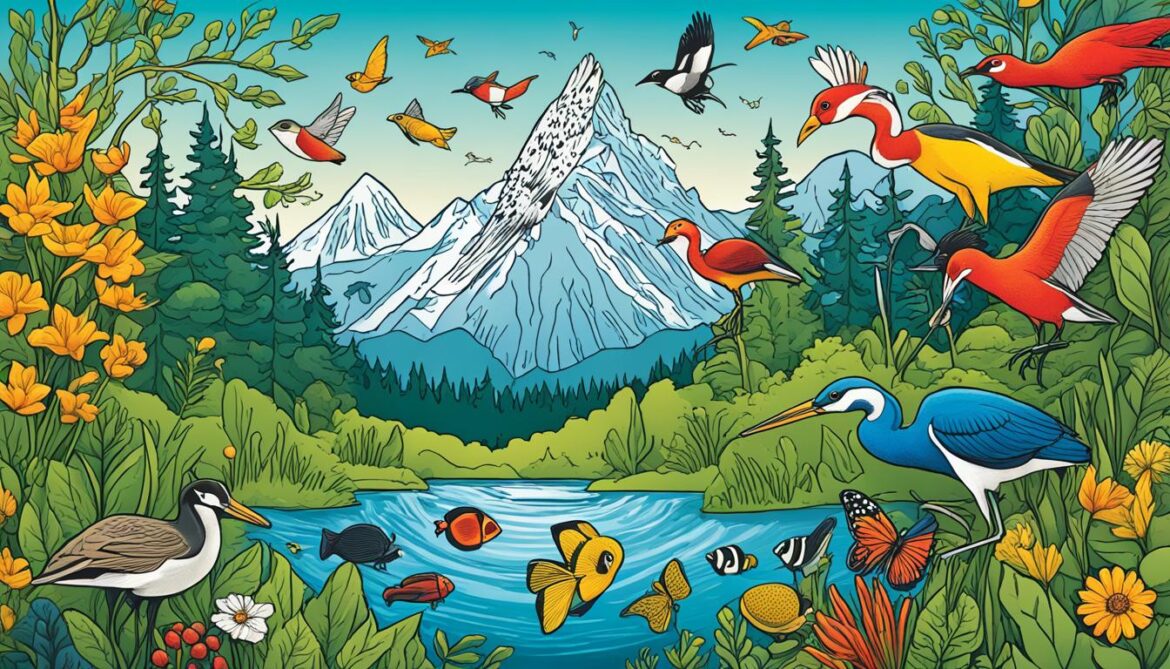
“Preserving biodiversity is a shared responsibility that requires collaboration between government, communities, and individuals. By addressing the challenges and embracing future opportunities, Latvia can pave the way for sustainable development while safeguarding its precious natural heritage.”
Conclusion
Latvia Biodiversity is a precious resource that must be conserved and protected. Despite the challenges it faces, Latvia has made significant efforts to enhance biodiversity conservation. With ongoing dedication, the integration of biodiversity objectives into sectoral policies, and the support of various stakeholders, the country has a promising future in preserving its unique ecosystems and ensuring the long-term sustainability of its biodiversity.
Conservation efforts in Latvia have seen the establishment of protected areas, such as national parks and nature reserves, which cover nearly 12% of the country’s territory. The development of a National Biodiversity Strategy and Action Plan further underlines Latvia’s commitment to preserving its natural heritage. Through these initiatives, Latvia aims to balance sustainable development while safeguarding its invaluable biodiversity.
Looking ahead, Latvia’s focus on better management plans, increased awareness, and the integration of biodiversity objectives into sectoral policies will be pivotal in addressing the challenges that lie ahead. By mapping ecosystems, improving public participation, and mobilizing resources, Latvia can continue to forge a path towards a future where its biodiversity thrives and benefits both present and future generations.




